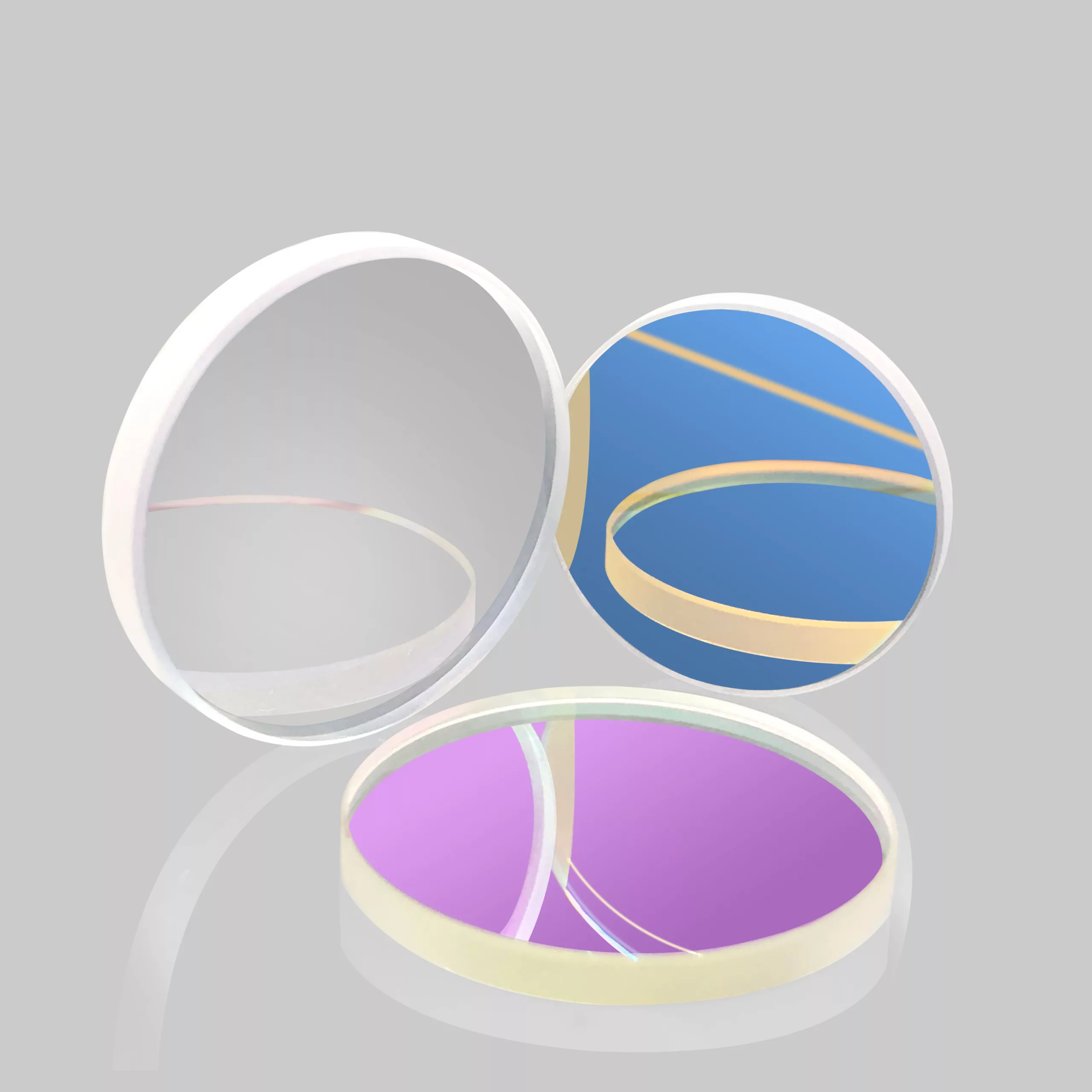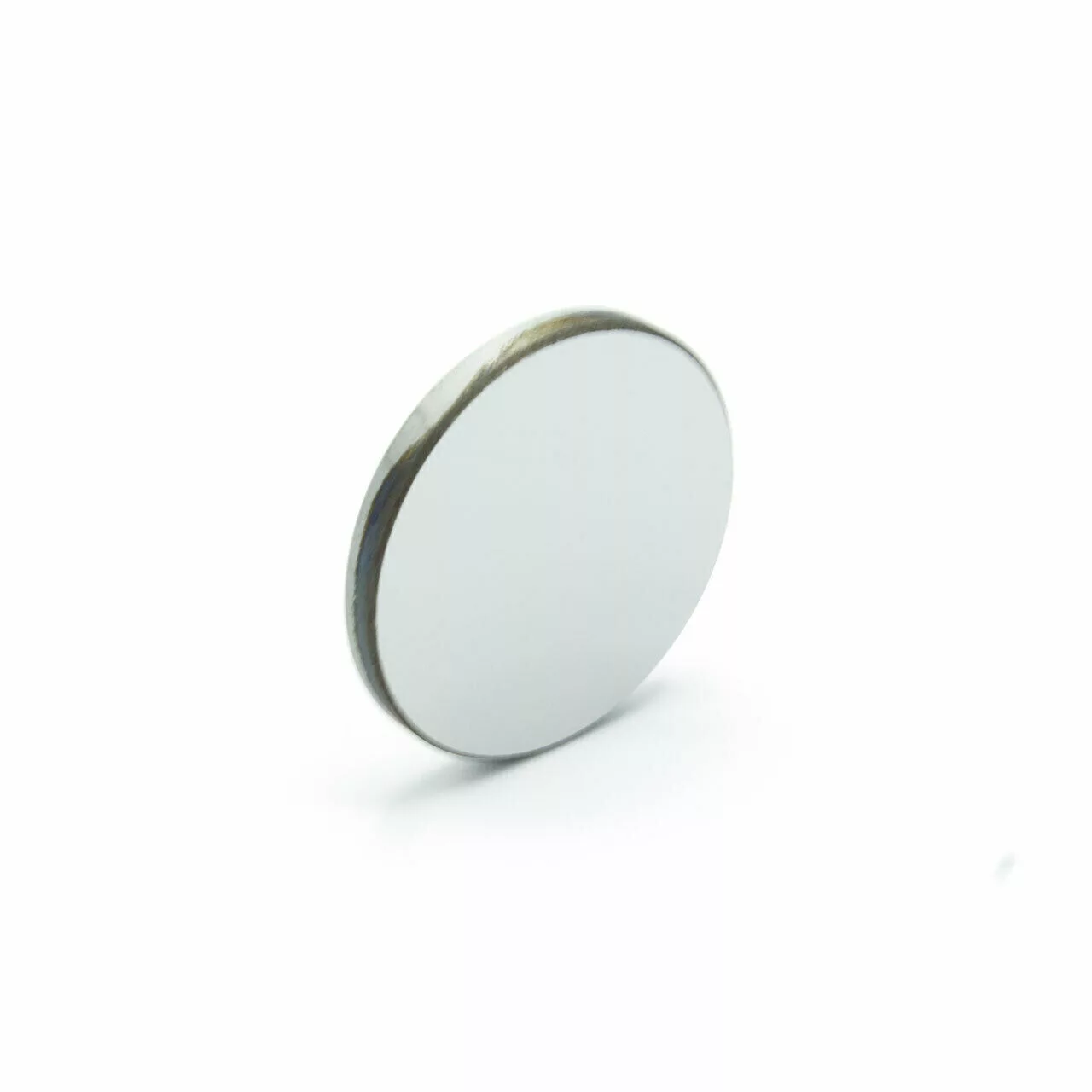NdYAG Laser Mirror
Nd:YAG laser mirror is a type of mirror designed for use with Nd:YAG lasers, which are commonly used in laser beam steering applications. These mirrors typically have high reflectance coatings and are designed for the common harmonic frequencies associated with Nd:YAG laser systems, such as 1064nm, 532nm, 355nm, and 266nm.
- NdYAG Base : 1047 – 1064 nm
- NdYAG Base & SHG : 532 nm & 1064 nm
- SHG : 524 – 532 nm
- THG : 349 – 355 nm
- 4thG : 262 – 266 nm
When buying a Nd:YAG laser mirror, you should consider factors such as the center wavelength and bandwidth of the mirror to ensure it matches your laser system. You should also consider the reflectivity and laser damage threshold of the mirror to ensure it can handle the power of your laser. Other factors to consider include size, surface quality and angle of incidence . You can contact us to understand if the mirror is suitable for your applications.

Order Sample NdYAG Miror
- Dia:0.5in,R:99%,Wavelength:1064,532nm
Overview of NdYAG Laser Mirror

Mirrors in the NdYAG Laser SystemOutput coupler mirror: This mirror is used to reflect a portion of the laser light out of the laser cavity and into the external environment. The reflectivity of this mirror is usually around 90%, which means that it allows about 10% of the laser light to exit the cavity. High reflectivity (HR) mirror: This mirror is designed to reflect most of the laser light back into the laser cavity. The reflectivity of this mirror is typically around 99.9%, which ensures that the laser light remains trapped inside the cavity for an extended period, leading to stimulated emission and the amplification of the laser beam. Turning mirror: This mirror is used to redirect the laser beam in a different direction. It may be used, for example, to steer the beam towards an optical fiber for delivery to a remote location. |
|
||||||||||||
What is a Total ReflectorTotal reflection mirrors are used in laser cavities to help create a resonant effect. The mirrors are highly reflective, allowing them to reflect the laser light back into the cavity, enabling the laser to build up its energy levels. As the laser light passes through the cavity, it reflects off of the total reflection mirrors, creating an oscillation that amplifies the laser energy. This helps the laser reach higher energy levels |
 |
NdYAG mirror Price
| wdt_ID | Diameter(mm) | Wavelength(nm) | Reflectance(%) | Angle of Incidence(°) | Price(USD) | Lead Time | MOQ |
|---|---|---|---|---|---|---|---|
| 1 | 12.7 | 1064,532,1064&532,808,355,266 | >99% | 0-45 | 49 | 4 weeks | 5 |
| 2 | 25.4 | 1064,532,1064&532,808,355,266 | >99% | 0-45 | 63 | 4 weeks | 5 |
| 3 | 50.8 | 1064,532,1064&532,808,355,266 | >99% | 0-45 | 92 | 4 weeks | 5 |
| 4 | 76.2 | 1064,532,1064&532,808,355,266 | >99% | 0-45 | 198 | 4 weeks | 2 |
